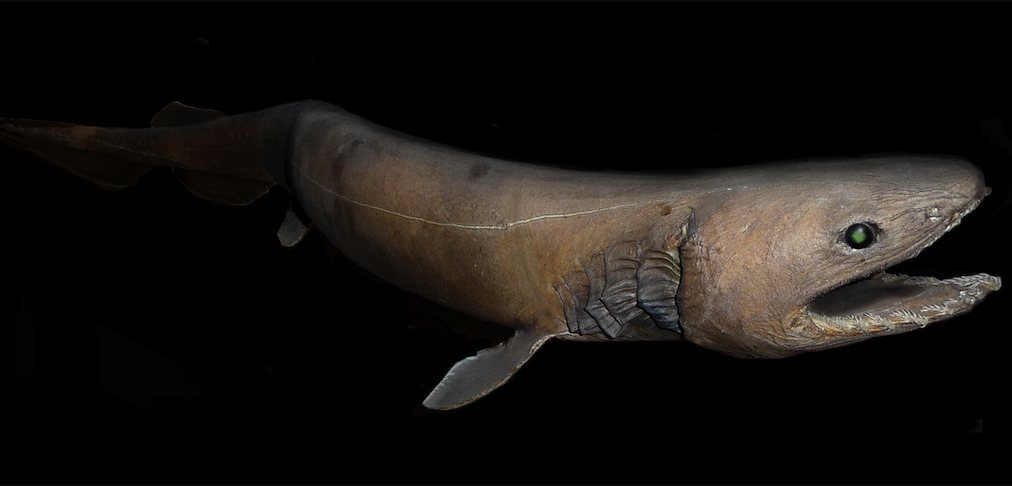What is a Frilled Shark?
Meet these living fossils of the deep.

If you’re like me, the name “frilled shark” conjures up a dainty image of a shark in a fluffy dress. But if you tap that name into a Google search you’re in for a thrill because those frills can kill. The frilled shark gets its name from a row of six red-lined gills that look a little like an Elizabethan ruff seen in Shakespeare’s day. However, the sharks’ terrifying 300 teeth might distract people from admiring this decorative feature.
While its common name comes from its gills, its Latin name (Chlamydoselachus anguineus) is inspired by its snake-like head and long, narrow body. A frilled shark looks more like an eel at first glance, giving off strong “swim away!” and “nope!” vibes. The Latin root of its species name, anguis, describes a snake, dragon or serpent. It does seem like the stuff of legend, especially since this shark has been on Earth for 80 million years. They first popped up in the Cretaceous period when all your favorite Jurassic Park stars like the Triceratops, Tyrannosaurs rex and Velociraptor roamed the land.
The first description of this shark dubbed it an “elusive creature, the serpent-like monster of the oceans.” Frilled sharks can grow up to six feet long with 25 rows of teeth. These teeth face inward, ensuring once prey get in, they don’t get out. No one has seen a frilled shark eat so we’re not sure how their prey meets their fate. Possibly they are lured near by the shark’s white chompers and are done in by a quick and powerful lunge forward that seal’s their fate.
Female frilled sharks are larger than males. These powerful mamas may have the longest gestation period on earth: 42 months. That’s over three years of carrying around an average of six pups in their bellies. While in the womb, they do not have a placenta like human babies, but live in egg capsules, nourished by the yolk.
Glimpses of frilled sharks are rare. In 2015 an Australian fisherman caught one and described the experience as something out of a horror movie. If all this talk about this scary shark is making you nervous to dip your toe into the ocean waves, don’t worry. These sharks typically live hundreds or even thousands of feet below the surface. The average person will be able to see a frilled shark only in pictures … or in your nightmares.